“Interview with Tatsuyasu Watanabe – Watanabe Textile”
Dyed by Nature, Woven for Tomorrow
Watanabe Textile’s New Culture of Weaving in Fujiyoshida
Interview with Tatsuyasu Watanabe – Watanabe Textile
Dyed by Nature, Woven for Tomorrow
Watanabe Textile’s New Culture of Weaving in Fujiyoshida
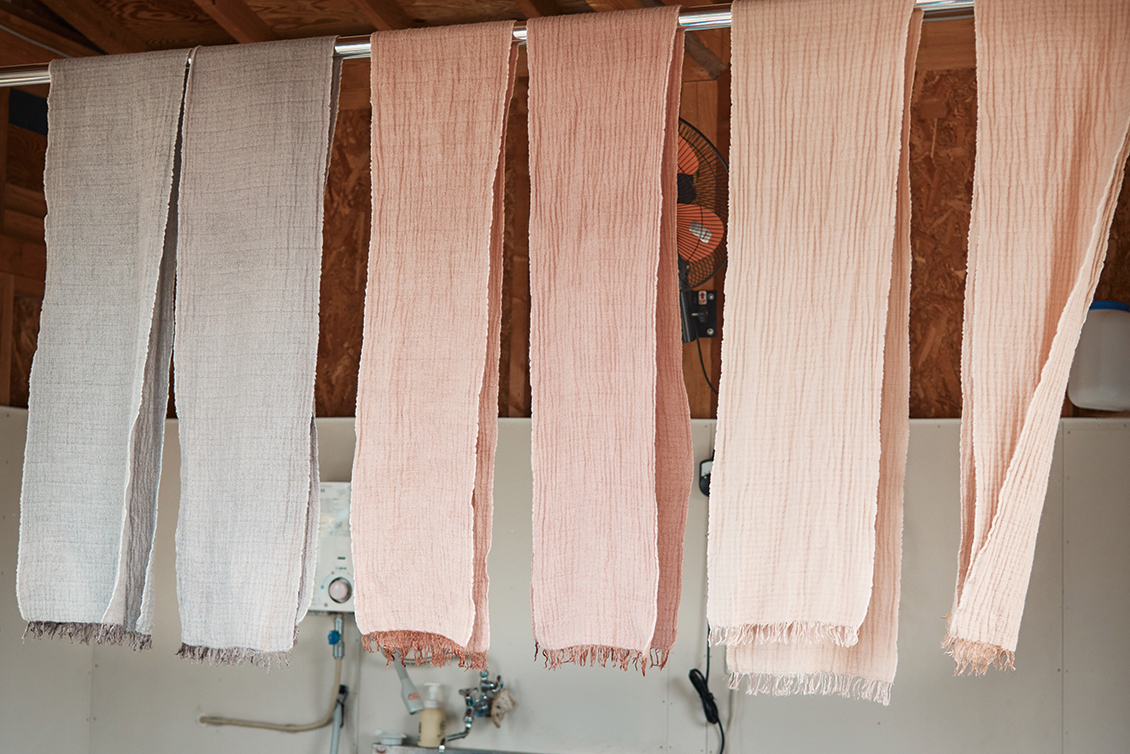
Fujiyoshida, Yamanashi—a historic textile town nurtured by the pure spring waters of Mt. Fuji. Rooted in Edo-era lining traditions, third-generation artisan Tatsuyasu Watanabe launched his own brand, Watanabe Textile, a distinctive label that fuses craftsmanship with creative vision drawn from architecture and art. His fabrics, carefully woven on looms more than 40 years old using 100% plant-based cupro, embody the brand’s philosophy of reverence for nature and thoughtful care for both people and the environment.
Inspired by this shared philosophy, BELLUSTAR TOKYO, A Pan Pacific Hotel (hereafter, BELLUSTAR TOKYO), invited Watanabe Textile—a brand devoted to sincerity and innovative craftsmanship—to collaborate on the “Sakura Upcycle Project.” In spring 2024, the brand created “Japanese fans made with threads dyed from cherry blossoms that had decorated the hotel’s interiors,” using blossoms from that season’s decorations. Building on this initiative, it went on to produce “scarves dyed with cherry blossoms that decorated the hotel,” using blossoms from the hotel’s spring 2025 decorations. These scarves are scheduled for release.
We spoke with Mr. Watanabe about the essence of craftsmanship, where Fujiyoshida’s textile heritage beautifully merges with contemporary sensibilities.
Fujiyoshida — A Textile Town Nurtured by the Blessings of Mt. Fuji
Fujiyoshida — A Textile Town Nurtured by the Blessings of Mt. Fuji
Fujiyoshida stretches out at the foot of Mt. Fuji, a town whose textile heritage is deeply intertwined with the mountain itself. As Mr. Watanabe explains, “The spring water from Mt. Fuji is remarkably pure, making it ideal for dyeing.” This pristine water enhances color vibrancy and has long supported the region’s evolution into a center of textile craftsmanship.
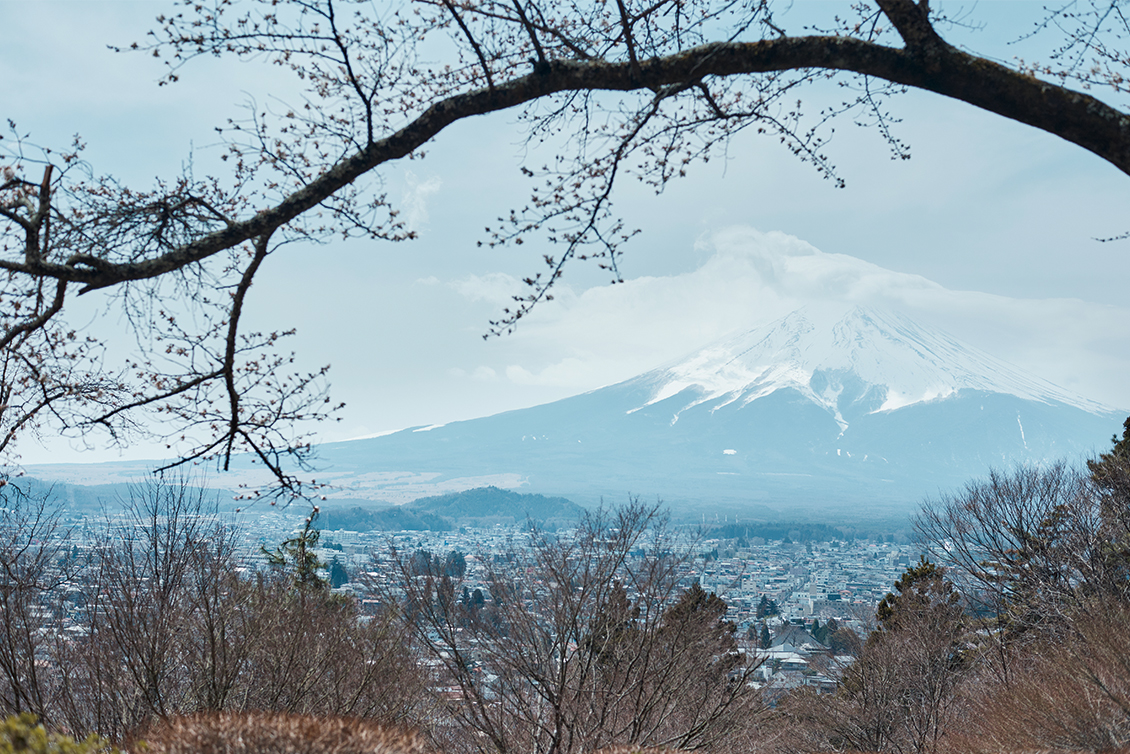
Tracing its history back to the Edo period, common people of the time were not permitted to enjoy fashion through the outer fabrics of their kimono. Instead, a culture of seeking beauty in the linings flourished, and a luxurious silk textile produced in this region, known as Kaiki (“Kai silk”), became highly prized. Fujiyoshida’s proximity to Edo, along with the convenience of transporting these lightweight linings, among other factors, fostered the town’s growth as a center of textile production.
In this land of rich history, Mr. Watanabe’s grandfather founded a textile workshop in 1948, beginning with the production of kimono obi (wide sash). The second generation expanded the workshop, mastering a wide range of textiles such as fabrics for clothing and umbrellas through OEM production. Around 40 years ago, the workshop began specializing in yarn-dyed cupro linings to meet the rising demand for linings as suit culture spread.
Bringing Insights from Architecture and Art into New Textile Creations
Bringing Insights from Architecture and Art into New Textile Creations
Over time, after experiencing the global financial crisis of 2008 and sensing firsthand the decline in demand for suits, Mr. Watanabe started to draw on his diverse creative experiences to develop original fabrics and products for his own brand.
Mr.Watanabe:“I began experimenting quietly, without telling my father—simply feeling my way toward a style of my own. Through these small trials, I gradually refined my skills and discovered how to create textured fabrics in my own way. Because I had always loved creating something out from within myself, it never felt like work; rather it became an extension of my creative practice. It felt as though I were exploring a new frontier beyond architecture and art, and suddenly the possibilities seemed endless. There were many nights when I found myself immersed in new ideas until midnight.
It was through this hands-on process that I realized the concepts and mindset I had learned from architecture could also be applied to textiles. After all, architecture, textiles, and fashion all involve the combination of materials—and ultimately, they are things designed for people to use. At their core, they share the same purpose. Whether it’s something you live in, wear, or hold in your hands, the act of making for people connects them all in the same context.
It struck me that the ways of structuring and combining materials—approaches rooted in architecture and art—were precisely what the traditional textile industry had been lacking. By focusing on that aspect, I felt we could create something more in tune with times.”

Books on Architecture and Art
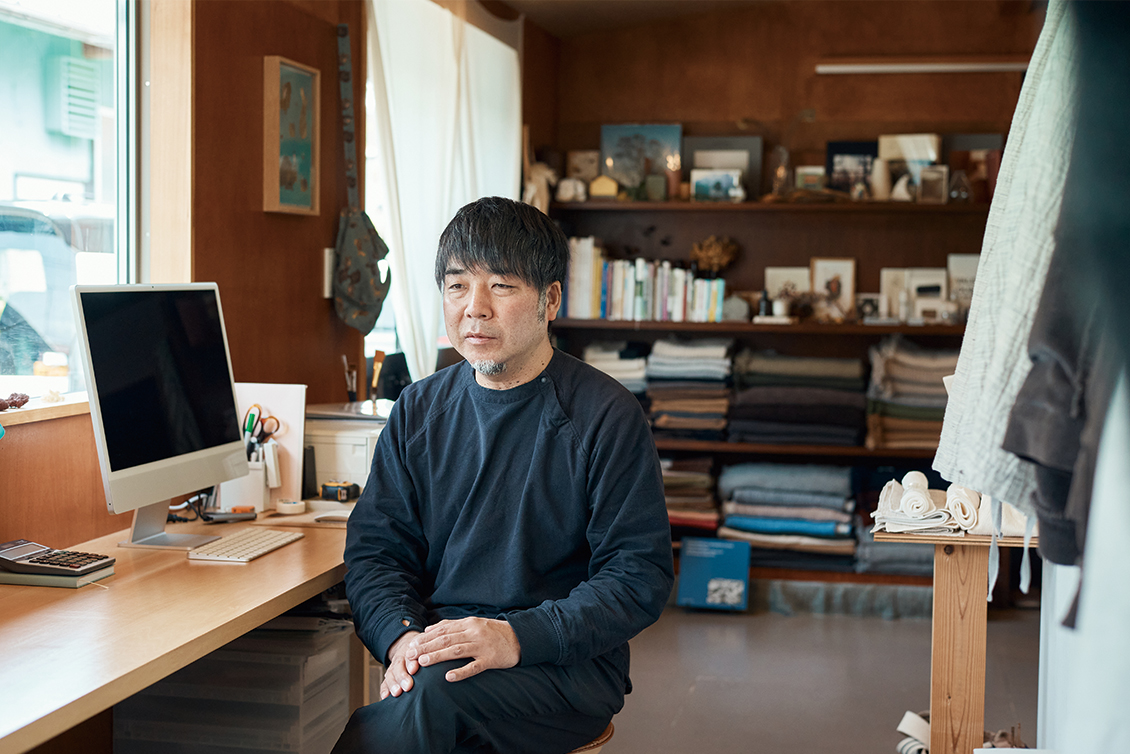
Mr. Tatsuyasu Watanabe
The first products he unveiled—blankets and cushion covers—were showcased at an exhibition in Sweden, where they received high praise from visitors for their “wonderful texture."
A Philosophy of Craftsmanship in Harmony with Nature
A Philosophy of Craftsmanship in Harmony with Nature
Watanabe Textile’s atelier is set in a natural environment where, just by stepping outside, one can look out over the forest and Mt. Fuji. Mr. Watanabe says his ideal form of craftsmanship is one that absorbs the sensibilities nurtured by this beautiful setting—embracing diversity and inviting multiple interpretations. It feels like “having nothing, yet containing everything.”

Mr.Watanabe:“It’s not about directly translating the shape of a leaf into a design. Rather, it’s about the comfort you feel when surrounded by nature, or the feeling that stirs inside when you see a beautiful color. These impressions, unconsciously accumulated over time, emerge naturally when I sit down to create. If the work, as a result, carries a presence that resonates with the spirit of nature, that, to me, is ideal.”
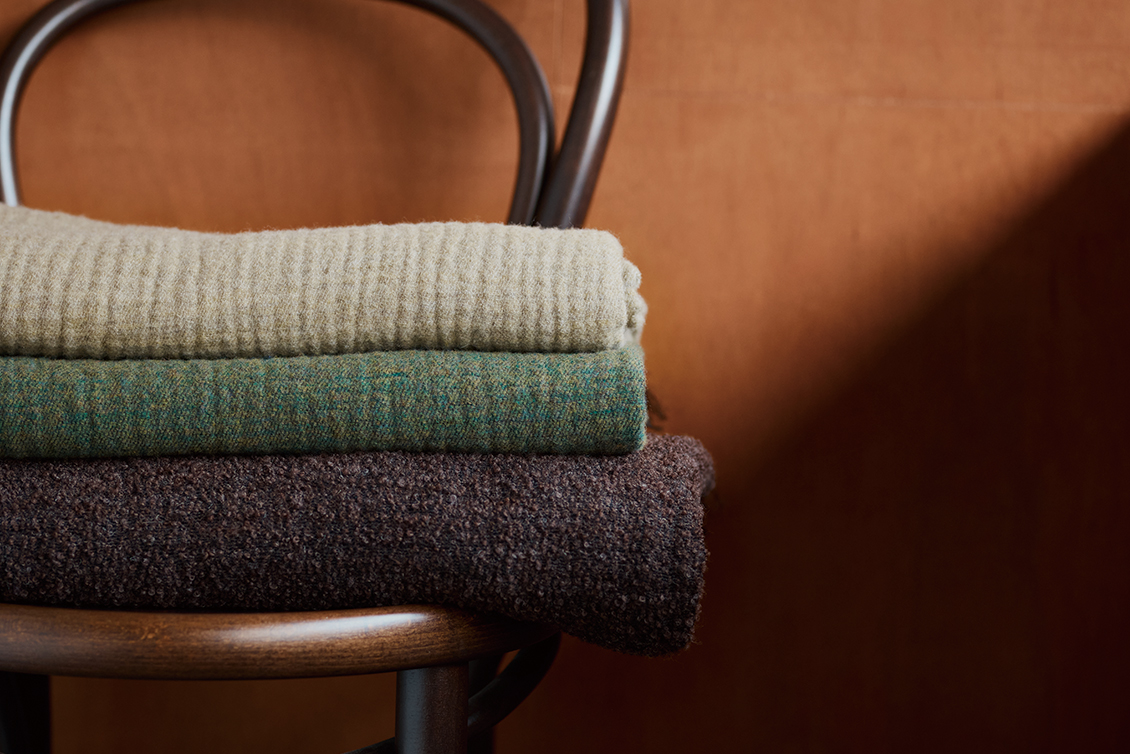
Products by Watanabe Textile
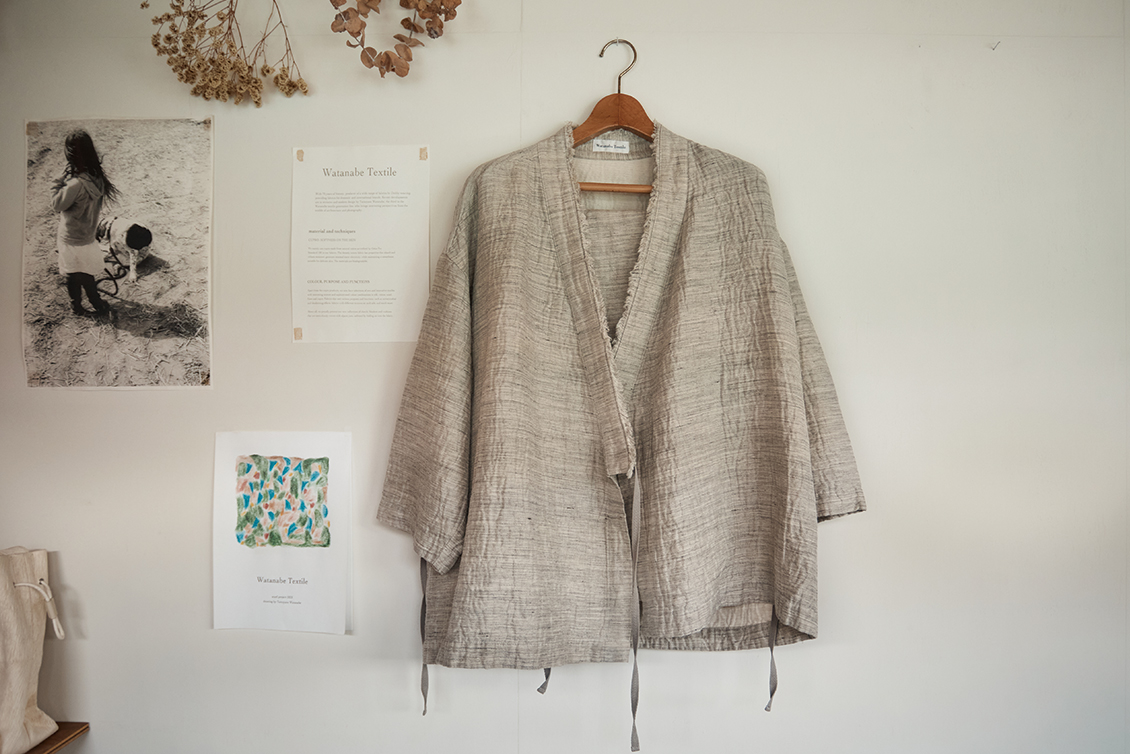
Products by Watanabe Textile
At Watanabe Textile, where a constant reverence for nature shapes the philosophy of making, one indispensable material is cupro. Also known as “artificial silk,” this 100% plant-based fiber is made from the downy hairs surrounding cotton seeds—normally discarded as waste. Cupro is naturally resistant to static electricity, and offers a luxuriously smooth, silky feel against the skin. Mr. Watanabe says that his own experience of living with atopic dermatitis is one reason he chose this material.
Mr.Watanabe:"I always start by making something I personally want to use. Among the materials I’ve worked with, I’ve long favored cupro, and the more I use it, the more I appreciate its qualities. It’s smooth, gentle on the skin, made from plants, and it even returns to the earth."
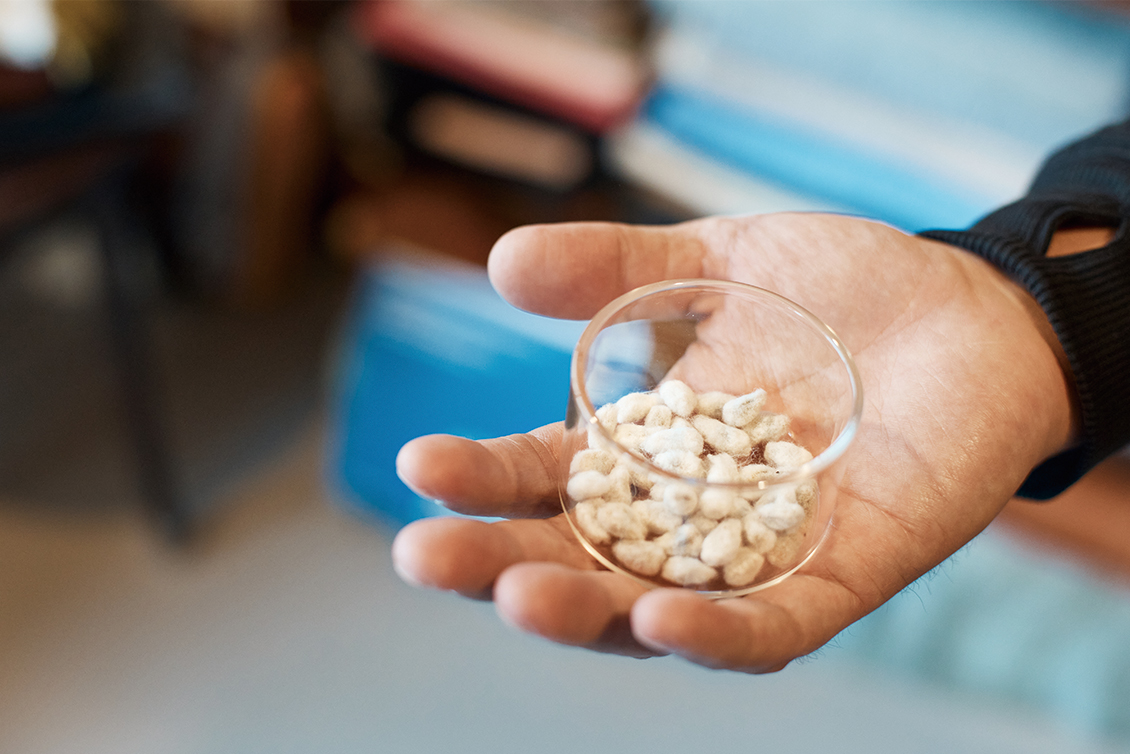
Raw material of cupro
